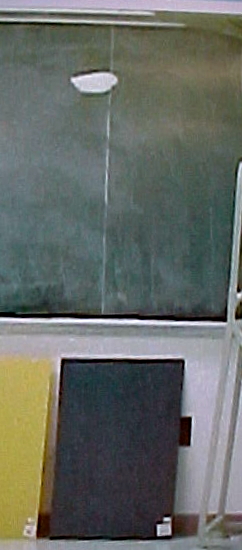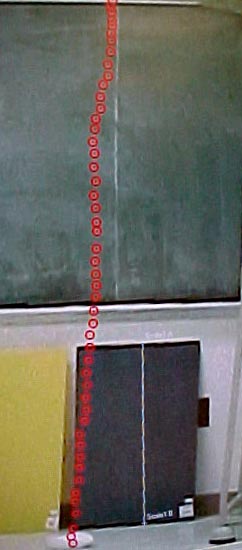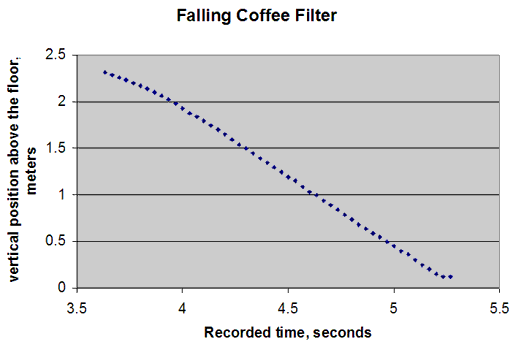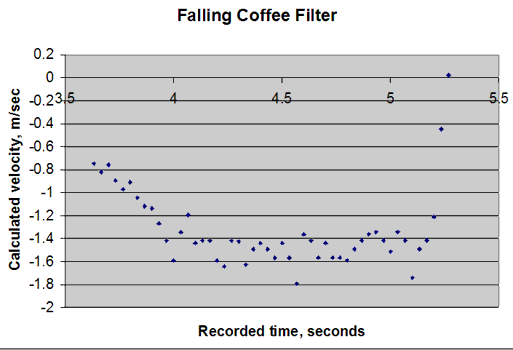Experiment of The Month
Terminal Velocity
The figures show (on the left) one frame of the video record of the falling coffee filters, and (on the right) the VideoPoint trail of positions for each of the video frames during the fall
With the VideoPoint software students record the position of the falling filter pair, for each frame of the video record. The position and time data are transferred to an Excel
In this case, the filter was dropped about 3.5 seconds after the video recording was begun. The data were



The position graph shows the filter starting slowly (with a low magnitude of slope) and speeding up. Its graph becomes a straight line, until the last two points, which indicate the filter is sitting still on the floor.

The velocity graph shows the velocity increasing in a downward direction until about 4 seconds into the video record. At that
-
Contact Information
Contact Number: 717-871-4297
Email: physics@millersville.edu